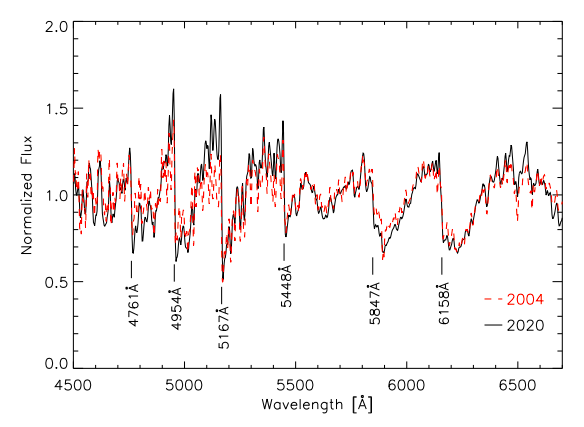[Betelgeuse Just Isn’t That Cool: Effective Temperature Alone Cannot Explain the Recent Dimming of Betelgeuse](https://arxiv.org/abs/2002.10463) suggests that the recent dimming might be caused by increased optical absorption by dust around the star, based on a spectral analysis. **Question:** The images below show absorption features assigned to titanium oxide (TiO). Why are these features saw-tooth shaped? When I think of absorption edges the transmitted light *drops* when crossing from lower to higher energy photons, but here the measured light *increases* from lower to higher energy. **note 1:** A [quick check](http://www.stsci.edu/~inr/ldwarf.html) shows that these shapes are typical, so it's really just a matter of me not understanding why these features have the particular shapes that they do. **note 2:** There is some discussion of Betelgeuse's titanium lines in the second half of Scott Manley's [Astronomers Think They Know Why Betelgeuse Got Dimmer](https://youtu.be/mnE4RTk3MCU) [](https://i.sstatic.net/qAMsp.png) >Fig. 1.— Optical spectrophotometry of Betelgeuse from 2020 (black) and 2004 (red). [](https://i.sstatic.net/Fne1v.png) >Fig. 2.— Normalized and continuum-flattened spectra of Betelgeuse from 2020 (black) and 2004 (red dashed), illustrating the relative depths of the T<sub>eff</sub>-sensitive TiO bands (labeled) in both spectra.